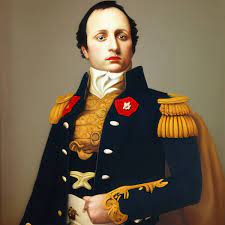Napoleon Bonaparte, a name synonymous with military genius and political prowess, has left an indelible mark on history. While his achievements on the battlefield and his impact on European politics are well-documented, one peculiar aspect of his legacy often sparks curiosity – his height. In this blog post, we delve into the question that has intrigued historians and enthusiasts alike: How tall was Napoleon Bonaparte?
What Was Napoleon’s True Height?
The height of Napoleon Bonaparte has been a subject of much debate and speculation. Historical records vary, and different accounts provide conflicting information. Some sources suggest that Napoleon was around 5 feet 2 inches (157 cm) tall, while others argue for a slightly taller stature of about 5 feet 6 inches (168 cm). The lack of a standardized measurement system during his time adds an additional layer of complexity to this historical puzzle.
How Tall Were Napoleon’s Soldiers?
Understanding Napoleon’s height becomes more intriguing when considering the average height of soldiers in his army. The men who fought under Napoleon were not giants by any means, with the average height estimated to be around 5 feet 5 inches (165 cm). This raises the question of whether Napoleon was genuinely short compared to the people of his era.
Why Did the British Call Napoleon Short?
The perception of Napoleon as a short man is often attributed to British propaganda. The derogatory term “The Little Corporal” was coined by political cartoonists and the British press to undermine his stature both physically and metaphorically. It served as a tool to diminish his image and belittle his achievements on the world stage. In reality, whether Napoleon was short or not is a nuanced question, and his height alone should not overshadow his strategic brilliance.
Who Defeated Napoleon?
While we explore the physical height of Napoleon, it’s essential to touch upon the military heights he reached and the eventual fall from power. Napoleon faced his most significant defeat at the Battle of Waterloo in 1815, where a coalition led by the Duke of Wellington and Gebhard Leberecht von Blücher succeeded in ending his rule. This defeat marked the culmination of years of warfare and signaled the end of the Napoleonic era.
Why Did England Fight Napoleon?
The Napoleonic Wars were a series of conflicts that involved most of the major European powers, with England playing a significant role in opposing Napoleon’s expansionist ambitions. The reasons behind England’s opposition to Napoleon were complex and multifaceted, ranging from concerns about French hegemony in Europe to the strategic imperatives of British foreign policy. The ideological clash between the principles of the French Revolution and the conservative vision of the European monarchies also played a pivotal role.
In unraveling the mystery of Napoleon’s height, we discover not only the physical dimensions of the man but also the intricacies of historical perceptions and propaganda. While the debate over his true height may persist, it is crucial to contextualize this aspect within the broader narrative of Napoleon’s life and legacy. The fascination with his stature should not overshadow the monumental impact he had on European history and the world at large. Napoleon Bonaparte, regardless of his height, remains an enduring figure whose legacy continues to be studied, debated, and celebrated.




